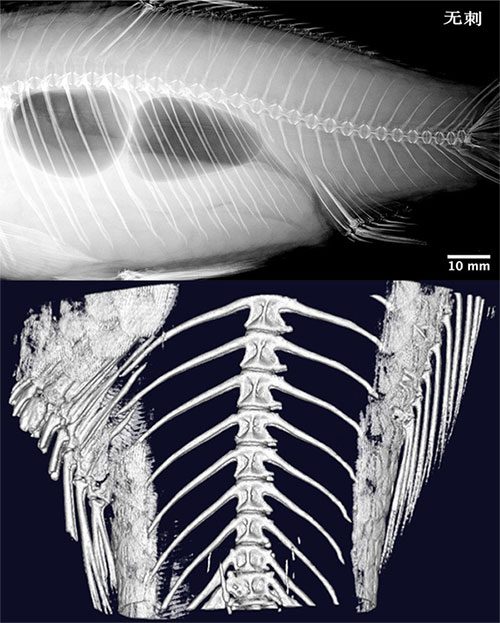Chinese scientists have conducted gene editing to tackle the issue of fish bones while preserving flavor, which contributes to the increased commercial viability of carp.
Researchers at the Heilongjiang Institute of Fisheries Research under the Chinese Academy of Fishery Sciences recently announced the successful cultivation of a type of carp that is bone-free. This achievement marks a significant advancement both theoretically and technologically in the field of aquaculture in China.
The feasibility of eliminating bones in fish has been a contentious topic in international forums for over 50 years, and the Heilongjiang Institute of Fisheries Research’s application of gene editing technology to develop a new strain of bone-free carp provides an answer.

Image of carp bones – (Photo: HEILONGJIANG INSTITUTE OF FISHERIES RESEARCH, CHINA).
Carp is a freshwater fish belonging to the carp family, known for its soft flesh and sweet taste. However, carp are notorious for having numerous small bones that pose a choking hazard when swallowed, as well as challenges in industrial processing.
Since 2009, the Heilongjiang Institute of Fisheries Research based in Harbin has initiated a project to address the bone issue in carp.
From over 1,600 potential genes, scientists identified the bmp6 gene as the primary regulator of bone growth in fish.
The bmp6 gene was then removed without affecting the growth and reproduction of the fish species.
“In 2020, we successfully cultivated the first generation of bone-free carp with a rate of 12.96%, followed by the second generation in 2021 with a rate of 19%,” said Kuang Youyi, a member of the research team, as reported by Asianews. He noted that by early 2022, the Heilongjiang Institute of Fisheries Research had produced the third generation of bone-free carp, approximately 20,000 fish, and began large-scale breeding.
“These fish are growing very well and are almost indistinguishable from normal carp. Results from the August inspection indicated a success rate of 100%,” Kuang added.
Experts believe this breakthrough will significantly enhance the industrial processing of this fish species.
“Consumers will no longer have to pick out fish bones,” remarked Li Shaowu, the leader of the research team, adding, “This could lead to a major change in fish consumption worldwide and will strongly promote seafood consumption in the future.”
“The genetic improvement of carp to eliminate bones is a bold revolution in China’s aquaculture industry,” Li further commented.
“Since the beginning of this year, we have conducted assessments of ecological guarantees, including swimming ability, cold tolerance, reproductive capacity, and resistance to attacks from other species for this new strain of carp,” Kuang noted.
According to Kuang, this research is expected to be completed by 2025.


















































